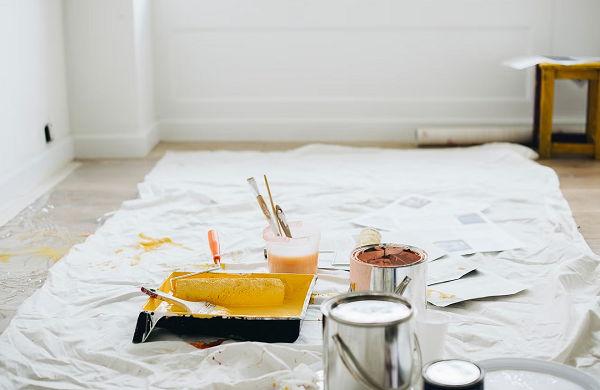
Enhancing Spaces through Interior Refurbishment
Interior refurbishment plays a crucial role in transforming the look and feel of a space. Whether it’s a home, office, or commercial establishment, a well-executed interior refurbishment project can breathe new life into any environment. By carefully considering design elements, functionality, and aesthetics, interior refurbishment offers the opportunity to enhance spaces, create a harmonious ambiance, and improve overall user experience. In this article, we will explore the various aspects of interior refurbishment and how it can be utilized to revitalize and uplift different spaces.
[ez-toc]
1. Introduction
In this section, we will provide an overview of the importance of interior refurbishment and its impact on transforming spaces.
2. Understanding Interior Refurbishment
Interior refurbishment involves the process of improving and renovating the interior aspects of a space. It goes beyond mere decoration and focuses on optimizing functionality, aesthetics, and user experience.
3. Assessing Space and Identifying Needs
Before embarking on an interior refurbishment project, it is crucial to assess the space and identify its specific needs. This includes evaluating the existing layout, analyzing traffic flow, and understanding the requirements and preferences of the occupants.
4. Concept Development and Planning
Once the needs and goals are determined, the next step is to develop a concept and create a comprehensive plan. This involves considering various design elements, such as color schemes, materials, furniture, and fixtures, to achieve the desired outcome.
5. Material Selection and Color Schemes
Careful selection of materials and color schemes can greatly impact the overall aesthetics and mood of a space. The choice of materials should align with the desired style and functionality while considering factors like durability, maintenance, and environmental impact.
6. Optimizing Layout and Spatial Flow
Efficient space utilization and optimal layout design are essential in interior refurbishment. By optimizing the placement of furniture, fixtures, and circulation paths, the flow and functionality of the space can be improved.
7. Lighting and Mood Enhancement
Lighting plays a significant role in setting the ambiance and enhancing the overall mood of a space. Through the strategic use of natural and artificial lighting, interior refurbishment can create visually appealing environments and evoke desired emotions.
8. Furniture and Fixtures
The selection and placement of furniture and fixtures are crucial in interior refurbishment. They should be chosen based on the space’s functionality, user comfort, and aesthetic appeal. Well-designed and appropriately scaled furniture can greatly enhance the overall look and usability of a space.
9. Incorporating Smart Technology
In today’s digital age, integrating smart technology into interior refurbishment projects can greatly enhance the user experience. Smart lighting systems, automated window treatments, and intelligent temperature control are just a few examples of how technology can be seamlessly integrated into interior spaces.
10. Sustainable and Eco-Friendly Solutions
With growing environmental concerns, incorporating sustainable and eco-friendly solutions in interior refurbishment has become imperative. Using energy-efficient lighting, eco-friendly materials, and adopting green practices can contribute to creating healthier and more sustainable spaces.
11. Enhancing Functionality and Storage
Interior refurbishment provides an opportunity to improve functionality and storage solutions within a space. Whether it’s optimizing kitchen layouts, creating custom storage units, or implementing space-saving furniture, maximizing functionality enhances the usability of the space.
12. Art and Decor Elements
Art and decor elements add personality and character to interior spaces. By carefully selecting artwork, accessories, and decorative pieces, interior refurbishment can infuse a sense of style and uniqueness into the environment.
13. Flooring and Wall Treatments
Flooring and wall treatments are vital components of interior refurbishment. From choosing the right flooring materials to exploring various wall finishes, these elements significantly contribute to the overall aesthetics and ambiance of a space.
14. Budgeting and Project Management
Proper budgeting and efficient project management are crucial for the successful execution of interior refurbishment projects. This includes estimating costs, sourcing materials, coordinating contractors, and ensuring timely completion of the project within the allocated budget.
15. Final Touches and Quality Assurance
The final phase of interior refurbishment involves adding the finishing touches and conducting quality assurance checks. This includes inspecting the completed work, addressing any deficiencies, and ensuring that the desired outcome is achieved.
Conclusion
Interior refurbishment offers a remarkable opportunity to transform spaces into visually appealing, functional, and harmonious environments. By considering the diverse aspects covered in this article, individuals and businesses can revitalize their spaces and create engaging experiences for occupants and visitors alike.
FAQs
1. How long does an interior refurbishment project typically take? The duration of an interior refurbishment project varies depending on the scale and complexity. Smaller projects may be completed within a few weeks, while larger projects can span several months.
2. Can interior refurbishment be done within a limited budget? Yes, interior refurbishment can be tailored to suit different budgets. By prioritizing essential elements and exploring cost-effective solutions, it is possible to achieve impressive results even with a limited budget.
3. What are some popular interior design trends for refurbishment projects? Some current interior design trends for refurbishment projects include minimalist designs, natural and sustainable materials, incorporation of smart technology, and the use of vibrant colors or bold patterns as accent features.
4. Is it necessary to hire an interior designer for refurbishment projects? While it is not mandatory to hire an interior designer, their expertise can greatly contribute to the success of an interior refurbishment project. They bring valuable insights, industry knowledge, and creative ideas to the table.
5. How can I ensure the durability of materials used in interior refurbishment? To ensure the durability of materials, it is important to select high-quality products from reputable suppliers. Additionally, proper maintenance and regular inspections can help prolong the lifespan of the materials used in the refurbishment.